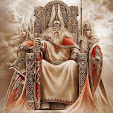Television (TV) is a telecommunication medium that is used for transmiting and receiving moving images and sound. Television can transmit images that are monochrome (black and white), in color, or in three dimensions.
The word "television" comes from Ancient Greek (tele = far), and Latin (visio = sight). Television may also refer specifically to a television set, television program, or television transmission. First commercially available in very crude form on an experimental basis in the late 1920s, then popularized in greatly improved form shortly after World War II, the television set has become commonplace in homes, businesses, and institutions, particularly as a vehicle for entertainment, adevertising, and news. During the 1950s, tv became the primary medium for molding public opinion.
In the mid-1960s, color broadcasting and sales of color tv sets surged in the US and began in most other developed countries. The availability of storage media such as video cassettes (mid 1970s), laserdiscs (1978), DVDs (1997), and highdefinition Blu-ray discs (2006) enabled viewers to use the television set to watch recorder material such as movies and broadcast material.
Internet TV has seen the rise of television programming available via the Internet through services such as iPlayer, Hulu, and Netflix. In 2009, 78% of the word´s households owned at least one television set, an increase of 5% from 2003. The replacement of bulky, high-voltage cathode ray tuve (CRT) screen displays with compact, energy-efficient, flat-panel alternatives such as LCDs (both fluorescentbacklit and LED-backlit), plasma displays, and OLED displays was a major hardware revolution that began penetrating the consumer computer monitor market in the late 1990s and soon spread to TV sets. In 2013, 87% of televisions sold had color LCD screens.




